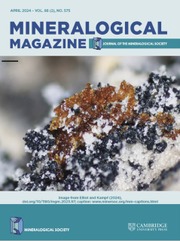Article contents
Myggbukta and Kap Broer Ruys: the most northerly of the East Greenland Tertiary igneous centres(?)
Published online by Cambridge University Press: 05 July 2018
Abstract
The Myggbukta Complex is a shallowly dissected central volcano superimposed on the early Tertiary Plateau Basalts of NE Greenland. This, and the Kap Broer Ruys centre, 30 km to the east, appear to be the most northerly central complexes of the North Atlantic Tertiary Province. The Myggbukta Complex comprises a suite of extrusions and minor intrusions ranging from picritic basalt to potassic rhyolite: most of the suite appears related by relatively low pressure (< 10 kbar) crystal fractionation. A small rise in initial 87Sr/86Sr (0.70593) with silica content is attributed to minor contamination through crustal anatexis. A basic dyke-swarm associated with the complex, precedes it and shows more limited differentiation. The basalts of the dyke-swarm and the Myggbukta Complex are genetically intimately related to the lavas forming the upper part of the earlier plateau basalt succession (UPLS). It is proposed that a large shield volcano developed some 100 km west of the developing spreading centre (Mohns/Aegir ridge), of which the UPLS, the dyke-swarm and the Myggbukta Complex represent three successive evolutionary stages. A generalized increase in differentiation through time can be recognized from one stage to the next. The acid intrusions of the Kap Broer Ruys area are probably also largely residues of basalt fractionation like their Myggbukta counterparts. However, higher initial 87Sr/86Sr ratios (0.70625–0.71034) imply a greater degree of crustal contamination.
- Type
- Research Article
- Information
- Copyright
- Copyright © The Mineralogical Society of Great Britain and Ireland 1984
References
- 14
- Cited by




